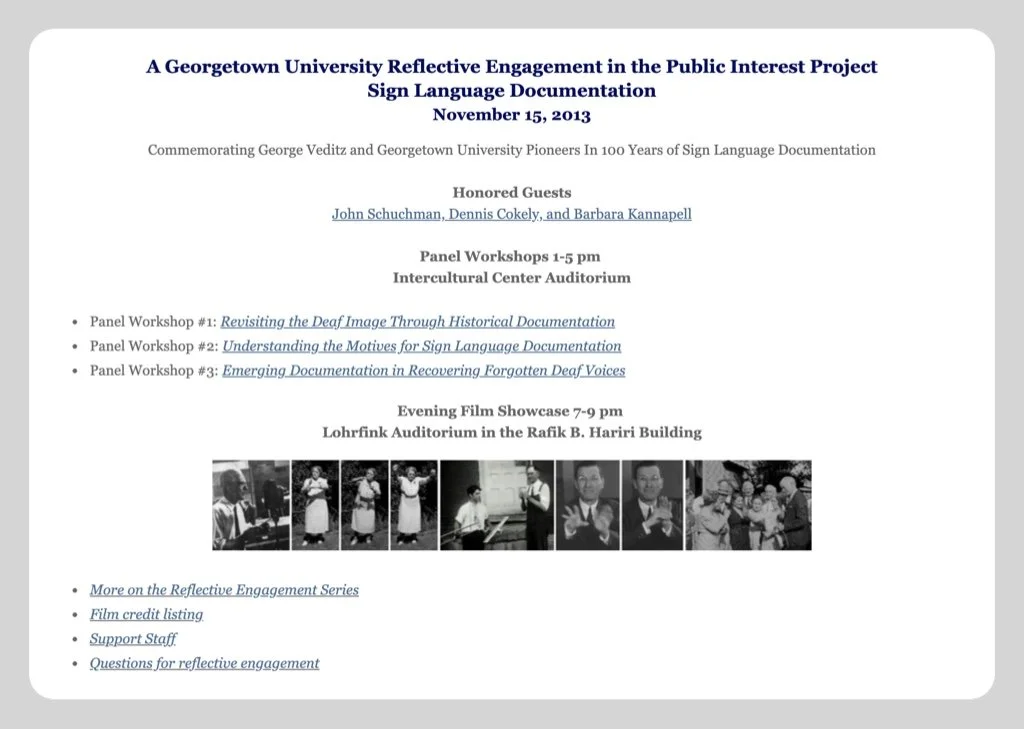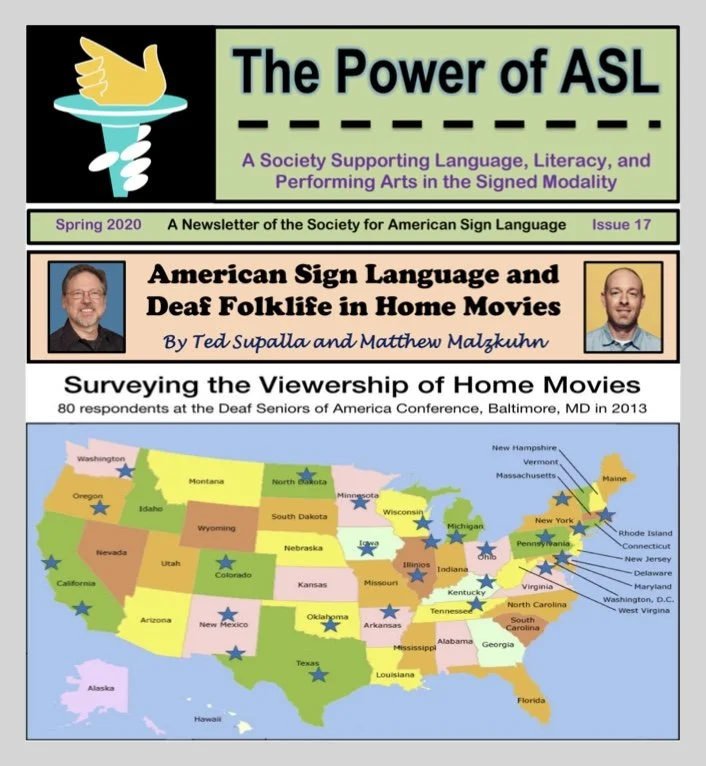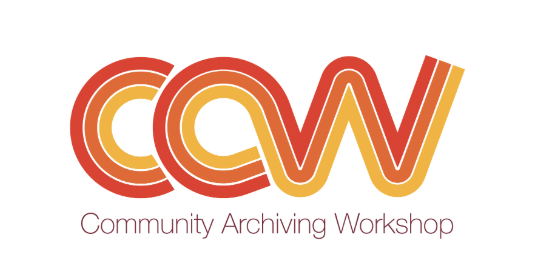FILM INFORMATION
Transcript
Matt: I present to you this old projector. Have you seen one before? Let’s see if it runs. It works! However the light is not shining. As light bulbs burn out they need to be replaced but finding a light bulb that fits may be difficult. Regardless, this is a beautiful model of what was in use years ago. Neat!
The purpose behind this video is to show some basic information on how to work with old film reels which are extremely delicate. I highly recommend you wash your hands before handling the film. The oil on our skin is easily transferred and can damage the film. After a good wash, you will be ready to go (you can wear gloves if you prefer). This is the first step in protecting your valuable movies.
There are three standard film sizes. The first is 16 mm which is the largest one. It fits in this big reel. It was the first film used and is similar to what we see on the projector. After many years, new innovations created better technology and led to Regular 8 mm film. As you can see here, it is considerably smaller. The film is basically the 16 mm film cut or split in half. Subsequent innovations led to the invention of Super 8 mm, identified by the many tiny perforations. Audio capabilities would be added later. These are the three film types you will see, if you haven’t already.
This film box is a common item you will see frequently. It comes out of the box in a reel, ready to be projected. Remember to document the information, such as dates, that is often written on the side of the box. It is important to preserve and retain this valuable information, ideally through pictures, do not discard the boxes without doing this.
I want to stress that even when your films have been digitized do not throw away the original materials for the sake of saving space. These should be kept forever. Film becomes permanent once it has been created. Formats like VHS are already disintegrating. Their lifespan is roughly 50 years, which means in the next 5 - 10 years we will be faced with a crisis—the degradation of all VHS tapes. Film does not face this issue. The picture has been taken, and the image imprinted on the film. This is why I strongly recommend you keep the original film and use the digital copies for enjoyment.
At times you may find a bigger reel such as this in your collection. No need to worry. The reel in the yellow box is 50 feet in length or 3 minutes, which is the standard length. As more movies were filmed, their creators would splice multiple films together creating a larger reel and longer viewing time. So if you see this type of reel in your collection, a family member, or maybe even yourself, has created a longer film by combining multiple shorter reels together.
Occasionally, old films will snap apart while being used. Do not overreact and throw them out. This can be easily fixed with a splicer. I suggest you do not do this yourself but instead ask a friend or someone who is skilled in using this device. It’s a simple process and once you have some practice, it will be very easy. After cutting the damaged ends of each reel, place them next to each other and connect them with a strip of tape, flip it over and do the same on the opposite side, firmly pressing the tape on the film. The splicer device has two different settings: one to fit 16 mm and the other to fit both Regular 8 mm and Super 8 mm. After lining up the film, depress the lever to make a clean cut, removing any damaged film.
These are a few simple, basic things you can do yourself and possibly becoming your new hobby.
HOW TO ORGANIZE YOUR CLIPS
Transcript
Matt: After digitization, edit your scene and organize them by creating a shotlist, saving them by name that labels those clips. You may include one or two topics per shot list. I suggest to organize it this way so that it will be easy to locate and retrieve when searching for specific shotlists rather than relying on long naming conventions which often hide pertinent information. Keep the shotlist concise and grouped by context such as an event, like a picnic. The scenes can be organized in whatever manner but its important to establish the shotlists based on one location and event. This will contribute to your ability to catalog and assess your collection much easier.
REFLECTIVE ENGAGEMENT ON SIGN LANGUAGE DOCUMENTATION
-
-
This Reflective Engagement in the Public Interest Project focusing on Sign Language Documentation brought together scholars, researchers, community members, and hobbyists together to celebrate the honoring of three pioneers in Sign Language research. A series of panel workshops were held that focused on Deaf Image, Motives for Documentation, and Emerging Projects. You can click on the image to visit the website for more information and to view individual presentations.
HISTORICAL SIGN LANGUAGE DATABASE
-
-
The Historical Sign Language Database (HSLDB) at Georgetown University is an online resource dedicated to preserving and analyzing early forms of American Sign Language (ASL) and related sign languages. Its primary purpose is to provide researchers, educators, and students with access to historical sign language materials, facilitating comparative analyses and supporting studies in linguistics, cognitive science, and the humanities.
ARTICLE ON BUILDING A COMMUNITY NETWORK
-
-
We have initiated the first steps in building a community-based national network by connecting Deaf individuals, families, organizations, and cultural institutions to share, preserve, and celebrate Deaf home movies and signed history. This network will support grassroots engagement, local screenings, storytelling events, and archival partnerships. Looking ahead, we aim to expand internationally by collaborating with Deaf communities and archives around the world, creating opportunities to exchange Deaf films, cultural practices, and histories across borders—highlighting the global richness and diversity of signed life.
BUILDING A STAKEHOLDER NETWORK
-
We are building a professional, and stakeholder, network around home movies by actively collaborating with archivists, community members, and scholars to preserve, interpret, and share Deaf cultural heritage. Archivists bring expertise in preservation and access, community members contribute lived experience and context, and scholars offer critical analysis and historical insight. Together, this network ensures that home movies are not only preserved but also understood and valued as vital records of signed life and history.
-
https://www.centerforhomemovies.org/
Mission: to transform the way people think about home movies by providing the means to discover, celebrate, and preserve them as cultural heritage.
We collaborated with the founder of this organization, Dwight Swanson, and he helped us grow our network through his support of our work.
-
Mission: The Association of Moving Image Archivists (AMIA) is a nonprofit international association dedicated to the preservation and use of moving image media.
We presented at their biannual conference in Baltimore, MD in 2019.
-
https://communityarchiving.org/
Mission: Community Archiving Workshop (CAW) seeks to share skills, knowledge, and resources to empower under-resourced, community-held audiovisual collections to increase visibility and support shared authority.
We worked with the CAW by sharing our multimedia materials and learned from their methods for digitizing and cataloguing them.












